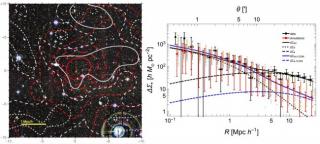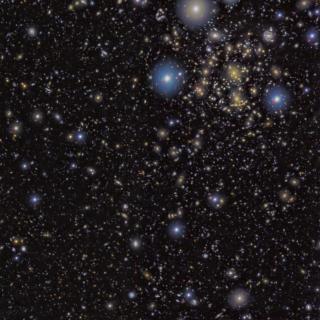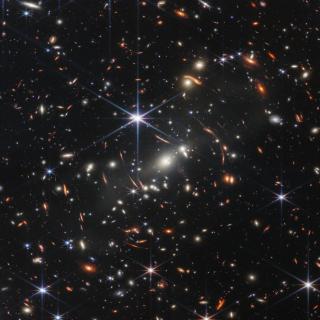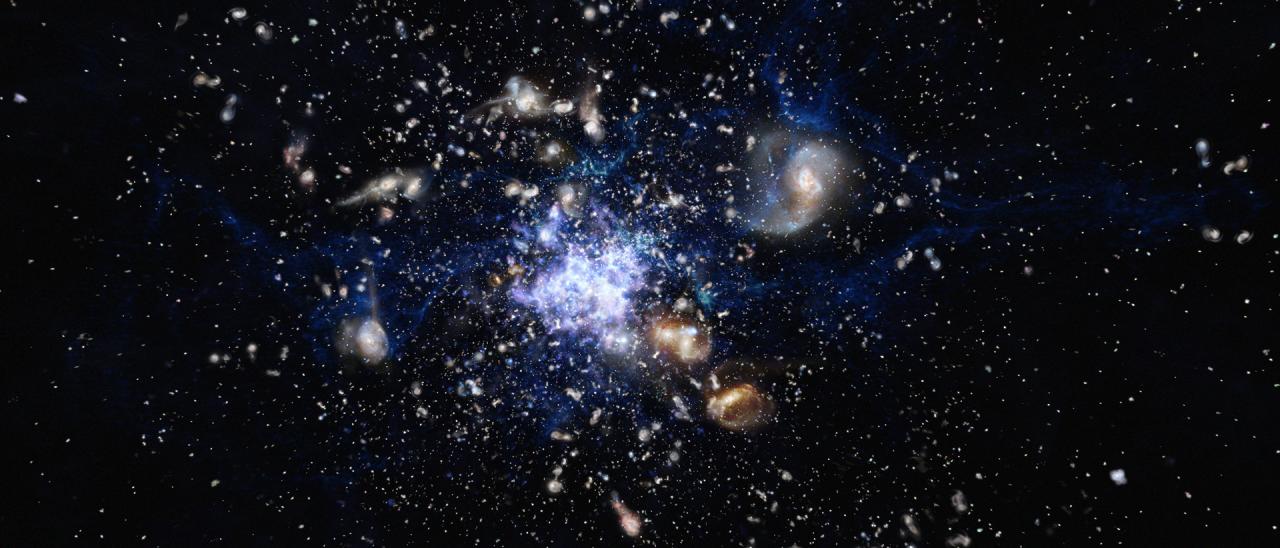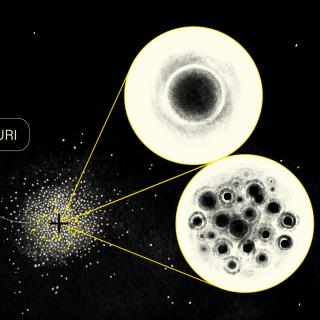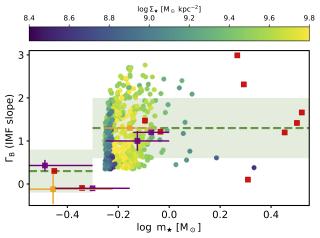An international research team, led from the Instituto de Astrofísica de Canarias (IAC) and the University of La Laguna (ULL) together with a group of Italian universities, has confirmed a new method for finding protoclusters of galaxies, the largest structures in the early universe. These progenitors of present-day clusters of galaxies played an essential role in the evolution of the universe, but are not easy to find. This study shows that a specific type of galaxies, those which emit radiation at submillimetre wavelengths, are very good indicators of the presence of distant protoclusters. The results are published in the journal Astronomhy & Astrophysics.
Protoclusters of galaxies were the largest structures in the early universe, only 1000 million years after the Big Bang. The scientific community is very interested in these systems, progenitors of present-day clusters of galaxies; as they are so old they can help us to understand the processes of formation and evolution of the large scale structures in the universe. However, identifying protoclusters is not at all easy, and very few of them are known.
To solve this problem an international scientific team has proposed a new method, focused on a particular type of objects, submillimetre galaxies. They were discovered towards the end of the 1990’s, and their name is due to their intense radiation in the submillimetre waveband, which is the region of the electromagnetic spectrum between the infared, and microwaves. They are among the most massive and dusty galaxies in the universe, and have high star formation rates, which can be one hundred times bigger than that of the Milky Way.
“A number of previous studies had shown evidence that submillimetre galaxies are at the centres of protoclusters of galaxies, but there was a major controversy” explains the first author of the article, Rosa Calvi, a researcher at the University of Ferrara, previously a postdoctoral researcher at the IAC. “Our article presents the first systematic large scale study of a sample of spectroscopically confirmed submillimetre galaxies”.
As a result of the study the team showed, without a doubt, that the submillimetre galaxies are excellent tracers of distant protoclusters. To achieve this result they looked for protoclusters around twelve submillimetre galaxies, and found that eleven of them are hosted, altogether, in eight protoclusters. Out of these eight protoclusters, the new study confirmed independently three that were already known, and the team even found evidence of five new protoclusters.One of these, surrounding the galaxy GN10, is among the most distant protoclusters observed until now. Its light took over 12,500 million years to reach the Earth.
The study also advances our understanding of the physical connection between submillimetre galaxies and their surroundings, showing a correlation, hitherto not observed, between the quantity of molecular gas (the material from which stars are formed) in the submillimetre galaxies, and the overdensities of galaxies and protoclusters. “To explain this correlation we have proposed the hypothesis that the interactions between galaxies and their most dense environments facilitate the collapse of the gas, and the resulting high rate of star formation which characterizes the brightest submillimetre galaxies” says Helmut Dannerbauer, an IAC and ULL researcher who is a co-author of the article.
In the coming years the number of confirmed protoclusters is expected to increase considerably, due to the use of the new generation of instruments, such as the Euclid satellite, one of the main current missions of the European Space Agency (ESA), in which the IAC has active participation. “With the Euclid satellite, a revolutionary tool for studying large scale structures, we hope to discover and characterize thousands of distant protoclusters, thereby giving an unprecedented impulse to the study of the evolution of galaxies” concludes Gianluca Castignani, a researcher at the University of Bologna, another participant in this study.
Article: R. Calvi, G. Castignani, H. Dannerbauer: “Bright submillimeter galaxies do trace galaxy protoclusters”, A&A, Vol. 678, 2023. DOI: https://doi.org/10.1051/0004-6361/202346200
Contact at the IAC:
Helmut Dannerbauer, helmut [at] iac.es (helmut[at]iac[dot]es)

